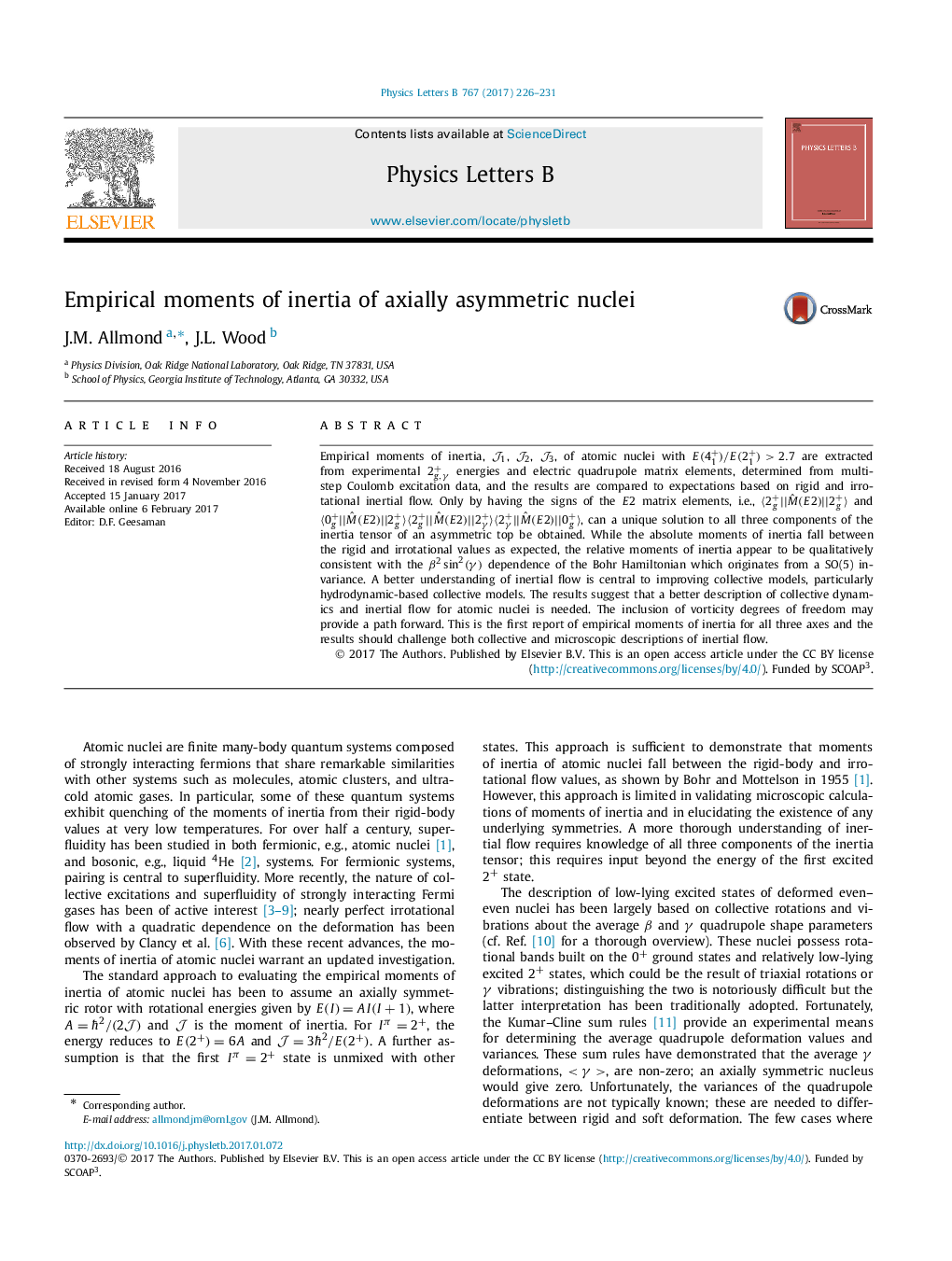| Article ID | Journal | Published Year | Pages | File Type |
|---|---|---|---|---|
| 5495443 | Physics Letters B | 2017 | 6 Pages |
Abstract
Empirical moments of inertia, J1, J2, J3, of atomic nuclei with E(41+)/E(21+)>2.7 are extracted from experimental 2g,γ+ energies and electric quadrupole matrix elements, determined from multi-step Coulomb excitation data, and the results are compared to expectations based on rigid and irrotational inertial flow. Only by having the signs of the E2 matrix elements, i.e., ã2g+âMË(E2)â2g+ã and ã0g+âMË(E2)â2g+ãã2g+âMË(E2)â2γ+ãã2γ+âMË(E2)â0g+ã, can a unique solution to all three components of the inertia tensor of an asymmetric top be obtained. While the absolute moments of inertia fall between the rigid and irrotational values as expected, the relative moments of inertia appear to be qualitatively consistent with the β2sin2â¡(γ) dependence of the Bohr Hamiltonian which originates from a SO(5) invariance. A better understanding of inertial flow is central to improving collective models, particularly hydrodynamic-based collective models. The results suggest that a better description of collective dynamics and inertial flow for atomic nuclei is needed. The inclusion of vorticity degrees of freedom may provide a path forward. This is the first report of empirical moments of inertia for all three axes and the results should challenge both collective and microscopic descriptions of inertial flow.
Related Topics
Physical Sciences and Engineering
Physics and Astronomy
Nuclear and High Energy Physics
Authors
J.M. Allmond, J.L. Wood,
